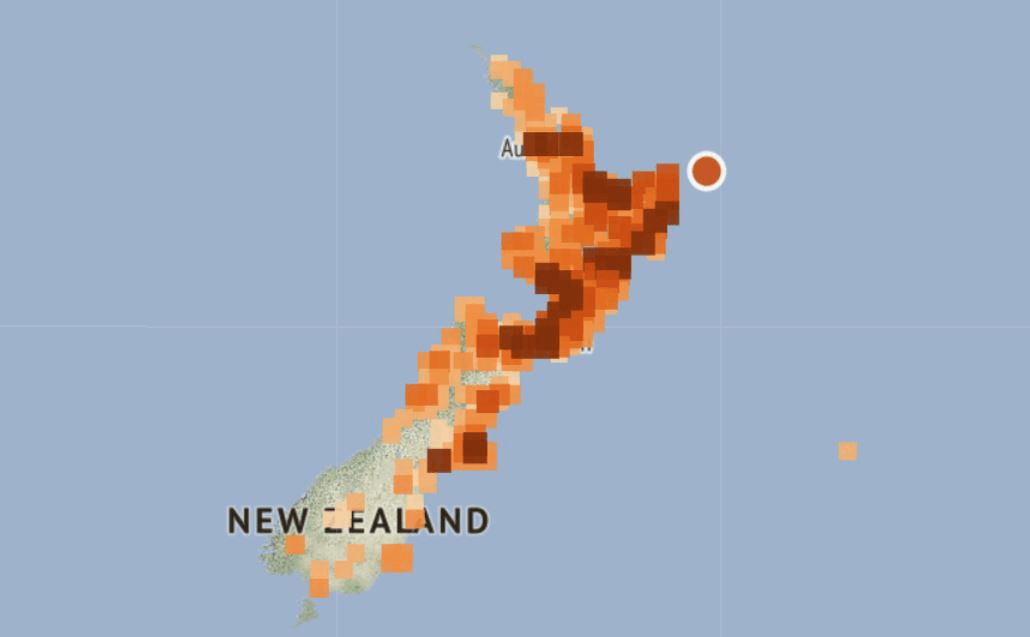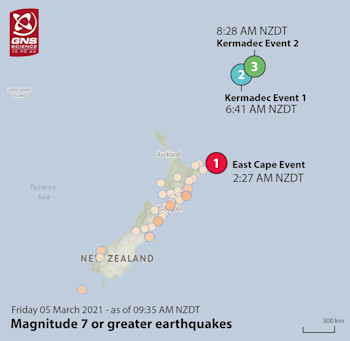Three future scenarios after today’s large offshore earthquakes.
A trio of serious earthquakes saw parts of Aotearoa shaken, tsunami threats triggered, and tens of thousands of people heading inland after evacuation instructions.
Of the magnitude-7-plus events, the first, shortly before 2.30am, was centered off East Cape. Measuring 7.1, it was felt across the large part of New Zealand. The latter two, a 7.4 at 6.41am and an 8.1 at 8.28am, were near the Kermadec islands.
The Geonet service received more than 52,000 reports of people having felt the quake for the 7.1 event, “easily breaking our last record holder, a 5.8 earthquake offshore Levin in 2020, which had 36,867″.
Future scenarios
Scientists at GNS have laid out three scenarios for potential seismic activity over the next 30 days.
“We recognise these events are dramatic and unsettling for many people. Our experiences In Aotearoa-New Zealand with earthquakes over the last 15 years have been challenging, and at times, tragic and traumatic. While we do not know for certain what will happen next, we do know that there will be more earthquakes. How large these will be or what time they will happen is uncertain, but we do have some statistical models that help us know what could happen next,” explains a post at Geonet.
“Based on our forecast models we have developed three scenarios for what earthquakes may happen over the next 30 days. Earthquakes that generate tsunami impacting the northern part of Aotearoa-New Zealand are possible in any of these scenarios. We expect there to be more felt earthquakes, particularly in the East Cape. The region considered for these scenarios extends from the central Kermadec region north of the March 5 M8.1 earthquake to offshore East Coast Aotearoa-New Zealand within the next 30 days, because this area of activity is closest to the land and people.”
The scenarios follow, with notes from Geonet.
Scenario One
Very likely (up to 90% within the next 30 days)
The most likely scenario is that further earthquakes of a smaller magnitude than occurred on March 5 will occur but will decrease in frequency over the next 30 days. This includes the potential for earthquakes in the M7.0-M7.9 range (more than 80% probability within the next 30 days). Larger earthquakes are more likely to occur in the central Kermadecs, near the northern part of the sequence. Similar sequences to these have occurred in this region in the last 50 years including a central Kermadecs M8.0 in 1976 and M7.7 in 1986.
Scenario Two
Very unlikely (15% or less within the next 30 days)
The next most likely scenario is a similar sized earthquake of around M8.0. This scenario is similar to what occurred in the 2014 Iquique, Chile earthquake sequence. Should this occur, it is much more likely to be in the central Kermadecs, but it is still possible for it to happen near the East Cape. Earthquakes of this size can occur on either the subduction interface or farther away as an “outer rise” earthquake on the incoming Pacific plate, east of the subduction zone.
Scenario Three
Extremely unlikely (1% or less within the next 30 days)
A much less likely scenario than the previous two scenarios is that the recent earthquakes will trigger a significantly larger earthquake (M8.5 or greater) within the next 30 days. For example, an earthquake could occur on the Kermadec subduction interface in the central Kermadecs. This scenario is very complex and when combined with the current uncertainty in our models, we cannot confidently put a probability estimate on it occurring; however, our models suggest this is even less likely to occur near the location of the March 5th East Cape M7.1 earthquake. This scenario is similar to what occurred in the Tohoku Earthquake in Japan in 2011. Although it is still extremely unlikely, the chances of this occurring have increased since the M8.1 earthquake.


